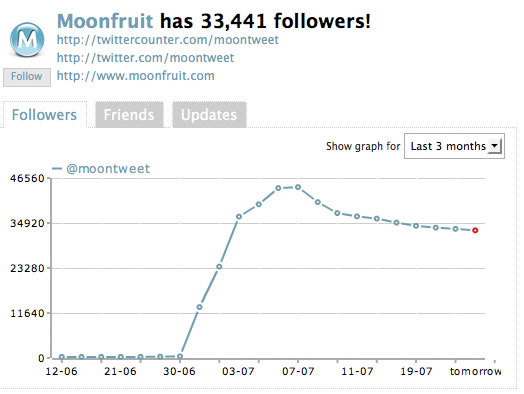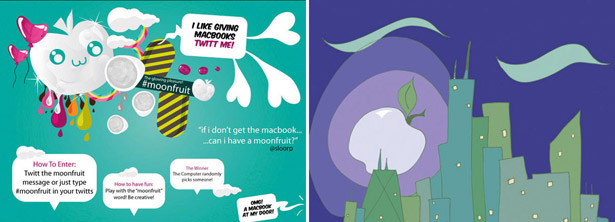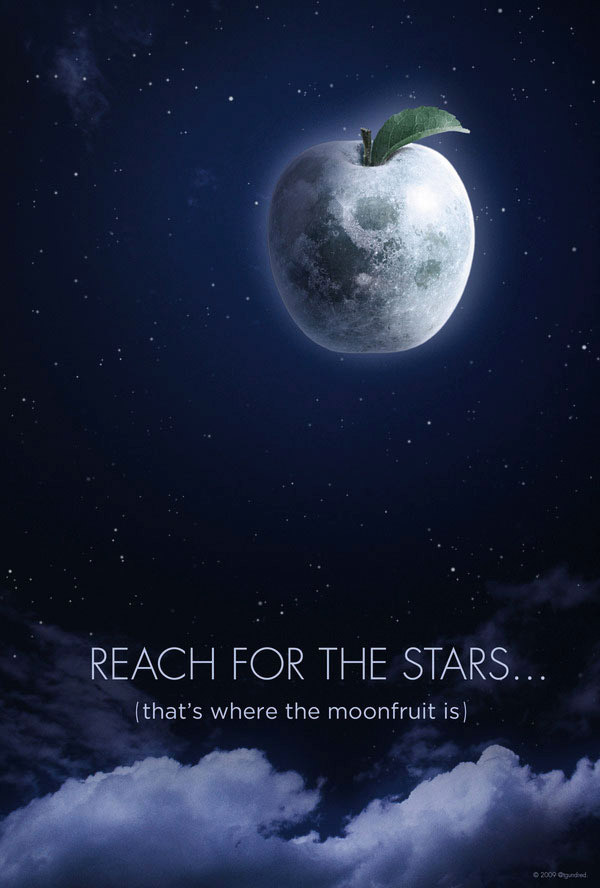Twitter marketing: the pros and cons
Twitter offers a cheap, quick way of spreading your message. But Twitter marketing can just as easily cause your brand some major damage, reveals Paul Douglas
In July 2009, website building software firm Moonfruit celebrated its 10th birthday by giving away 10 MacBook Pros. To be in with a chance of winning, all you had to do was post a message on Twitter that included the hashtag #moonfruit.
Almost immediately, the word Moonfruit started climbing Twitter’s Trending Topics, quickly reaching number one, and staying there for three days.
The result was that Moonfruit trials rose 350 per cent and traffic to the Moonfruit website peaked at 12 times the normal daily average. Moonfruit also had 2.5 per cent of all tweets on Twitter during the peak, and averaged around 1.0 per cent over the seven days with 2 per cent+ peaks every day. Not bad for an outlay of just £9,000.
Twitter marketing ideas
“We wanted to do something to celebrate our 10th birthday and we thought we’d try to use Twitter,” says Wendy Tan White, marketing director at Moonfruit. “We call our target market ‘design aspirers’. They want their site to look nice – it doesn’t mean that they’re necessarily graphic designers or photographers, but they’re interested in things looking good, and people in that group tend to like Apple products. Apple had just released the new MacBook Pro, so the timing came together.”

It wasn’t an easy decision, White reflects. “We did umm and aah about doing it for a while because sometimes these campaigns can fall very flat. In the worst cases they can be totally vilified, but some have done very well. Importantly, we tried to add a bit of humour and creativity to it rather than just being ‘spam your friends’.”
Doing it wrong
In Habitat’s case, using Twitter marketing to jump on Trending Topics was a disaster. @HabitatUK added popular hashtags such as #MOUSAVI, an Iranian election keyword, to messages such as “join the database for free to win a £1,000 gift card”. Following widespread outcry on Twitter, Habitat deleted the messages, blamed an unnamed intern for the faux pas, and apologised. “This was absolutely not authorised by Habitat,” said a statement from the firm.

This debacle is “evidence many brands still don’t understand social mediums and the influence and impact that they can have,” says Tim Gibbon, director of Elemental Communications. “Many brands aren’t publishing using social media guidelines and obviously should be. Particularly with digital channels, it can amount to brand suicide, especially if social marketing is managed by staff who aren’t equipped to do it properly.”
Get the Creative Bloq Newsletter
Daily design news, reviews, how-tos and more, as picked by the editors.
Dominating trends
Did Moonfruit set out to dominate Trending Topics? “We weren’t actually trying to,” says White. “Of course we wanted to do well, to create buzz, but we never actually thought ‘Okay, let’s dominate Twitter.’ You can’t actually guarantee that’s going to happen. But obviously that helped fuel it.” Yet Twitter stepped in and the #moonfruit hashtag promptly vanished from Trending Topics.
“They haven’t really explained why, but I think we can make a judgement on that,” says White. “A lot of spambots follow Trending Topics, so people who followed us or Tweeted about us started to get followed by spambots, and that was creating a problem. Also, some people who weren’t being creative were sending out a million [Moonfruit] hashtags to their friends.” But by this stage, the campaign had gained so much pace that Twitter’s action had little impact, says White.
But was it fair? “It’s their game and it’s their rules,” White replies. “Most people on Twitter are promoting something in some way, whether it’s themselves, their product or their company – so we’re certainly not the only ones. They could argue they pulled it because it was commercial, but lots of things are commercial on Twitter. So kind of what they’re saying is, you can do it as long as you don’t get too big.”
Perhaps Twitter needs to be more open about how it manages Trending Topics and what the rules are for those wishing to use it commercially? “I think it would be useful,” agrees White. “The days of Twitter just being a pure fun platform are well gone.”
Marshall Manson, director of digital strategy for Edelman UK, concurs. “There are a lot of people who have business voices, or are representing businesses, or are doing marketing on Twitter at the moment,” he says. “If Twitter would prefer that not to be the case, that’s their choice, but they’ve suggested that they’re happy for that to take place. If that’s the case, and there are going to be ground rules about what sorts of activities they’re going to allow, they need to help us understand exactly what those rules are.”
So overall, was the campaign worth the time and cost? Absolutely, says White. “The prize cost in total was £9,000. In terms of return, the number of people building sites is up three-and-a-half times; the number of subscriptions is up 20 per cent; our SEO moved from around page four of Google for ‘website builder’ or ‘free website builder’ to number one. We had half a million visits during the campaign. Our traffic is still up over 50 per cent from what it was. And then there’s brand awareness, the content creation – you couldn’t pay people to do that for you. Even if you looked at pay per clicks to try to get the same visits, or an above the line campaign, you could pay up to a million pounds. So from an ROI perspective it’s well beyond our expectations. But the thing I’m most pleased about was the engagement and the content creation.”
Detractors
Not everyone is so impressed. Marketing legend Seth Godin says the campaign was “certainly loud – but is making noise the way to grow your business and your brand? You can get 35,000 Twitter followers fairly easily, but then what? What’s the point? How do you talk to people who don’t want to be talked to? I’m a bigger fan of delighting a dozen people and having them spread the word.”
Drew Benvie, managing director at 33 Digital, feels the campaign went against the spirit of Twitter. “Creating a lasting and engaging presence on Twitter takes more than just expensive giveaways,” he says. “What Moonfruit achieved seems to have jarred with the Twitter community. Almost nobody I’ve spoken to about the stunt sees Moonfruit in a favourable light. Most don’t even know what the company does.
“By tapping into Trending Topics,” he continues, “the marketer is playing with fire. Spamming the community is an increasingly common tactic. The way Twitter’s system works enables content that’s worth sharing to turn viral very easily. In the case of Moonfruit, that content was hand-waving in an attempt to get a free laptop. For many, though, viral spread comes from providing something that the community appreciates and wants to share.”
Dan Griliopoulos, account manager at Bastion PR, feels that the campaign was “a good one-off viral campaign idea” but argues that “over the middle- to long-term, ideas like that will generate diminishing returns. They generate too much system noise and annoy serious users who just want to use the system to communicate.”

White counters: “Most of our growth has been word of mouth only. We know that works. But in all honesty if you want a real burst without paying a million pounds for it, then you have to try different things, and for us this has been by far the biggest step-change in marketing that we’ve done. The conversation has very much moved now to ‘What do you want from us and what can we help you with?’ so it’s not that I don’t value the brand affinity and the engagement.”
Other approaches
So how else can firms use Twitter marketing to their advantage? “We think Twitter is a wonderful medium to help people engage, but engage with a focus on building relationships, engage with a focus on adding content and adding value beyond the transaction or beyond the brand as best you can,” says Manson.
Benvie suggests using Twitter to collect and adapt to customer feedback. “One way brands could make better use of Twitter is through adapting their business behaviour in line with realtime feedback from the consumer swarm,” he says. “From noticing product flaws early to rewarding great customer service, what companies can see when they look is insightful to more divisions than just PR and marketing.
“A company could change customer service tactics, tweak its business processes or improve on product design based on what they see. Treat Twitter like one big focus group and you’ll tap into the pulse of the consumer.”
Matthew Watson, account executive at Speed Communications also urges firms to join the Twitter conversation: “Companies should listen to what is being said about their brand or about their industry, before taking the leap and engaging in conversations. Rather than just broadcasting news and hoping users listen, companies must be open to being challenged by users and actually follow people and enter into meaningful conversations with them.”
“The beauty of Twitter is that as an organisation you don’t have to set up a ‘Twitter watch’ department,” adds John Cunningham, director of business markets at ntl:Telewest Business. “At our company, the customer issues are picked up by employees who spot ‘stuff’ when they’re on Twitter as individuals. They are acting as ‘real people’ who want to help resolve customers, or at least point the right people at the problems. Many other companies are starting to adopt this viral ‘let’s look after our customers and our brand’ approach on Twitter.”
Might Moonfruit run a similar campaign in the future? “I honestly believe you can’t do that many like this,” says White. “I think we were lucky with the timing. Our next campaigns will be mostly around our customers and our products, building on our engagement and brand affinity. But we’re always looking for creative ways to do things, we always have done.
“That’s the irony – we’ve done lots of other creative stuff in the past but it hasn’t had the global impact. So the only reason everyone is asking us now ‘What does it mean?’ is because it’s suddenly gone global.”

Thank you for reading 5 articles this month* Join now for unlimited access
Enjoy your first month for just £1 / $1 / €1
*Read 5 free articles per month without a subscription

Join now for unlimited access
Try first month for just £1 / $1 / €1
The Creative Bloq team is made up of a group of design fans, and has changed and evolved since Creative Bloq began back in 2012. The current website team consists of eight full-time members of staff: Editor Georgia Coggan, Deputy Editor Rosie Hilder, Ecommerce Editor Beren Neale, Senior News Editor Daniel Piper, Editor, Digital Art and 3D Ian Dean, Tech Reviews Editor Erlingur Einarsson, Ecommerce Writer Beth Nicholls and Staff Writer Natalie Fear, as well as a roster of freelancers from around the world. The ImagineFX magazine team also pitch in, ensuring that content from leading digital art publication ImagineFX is represented on Creative Bloq.
